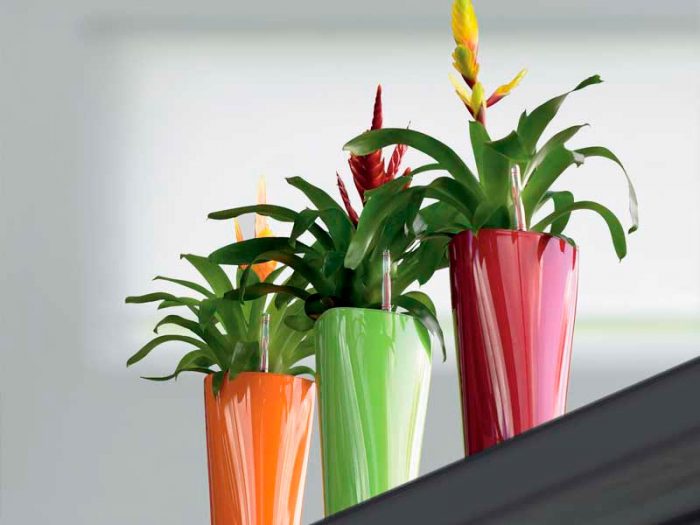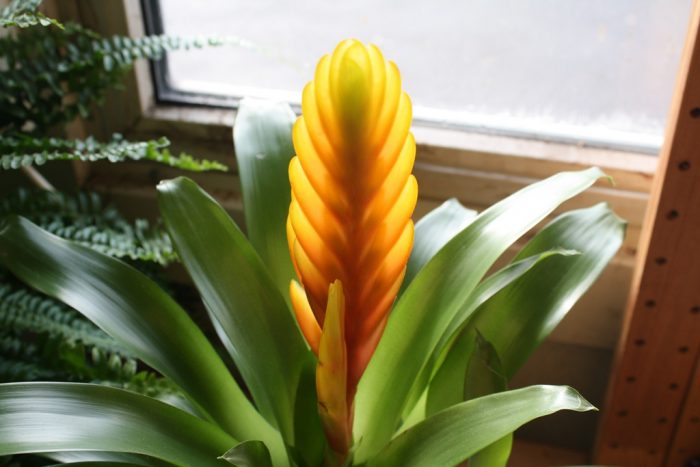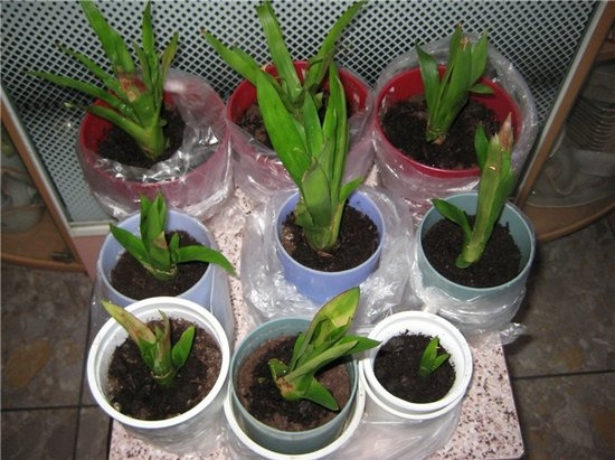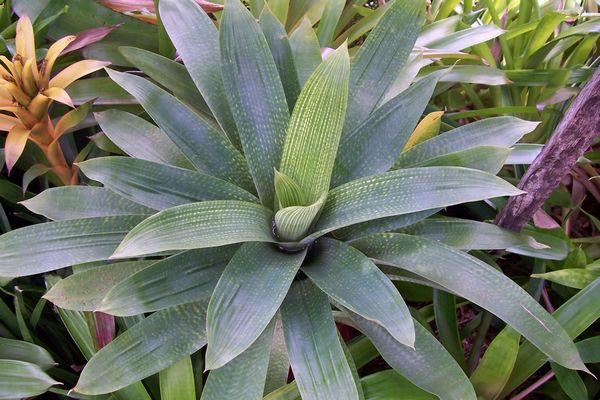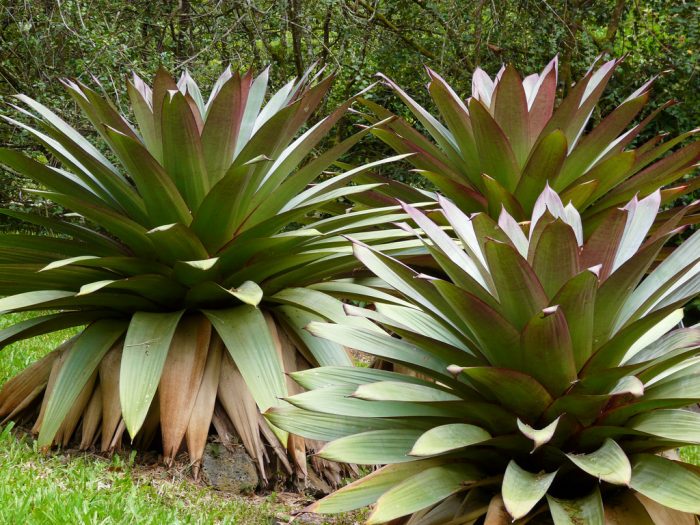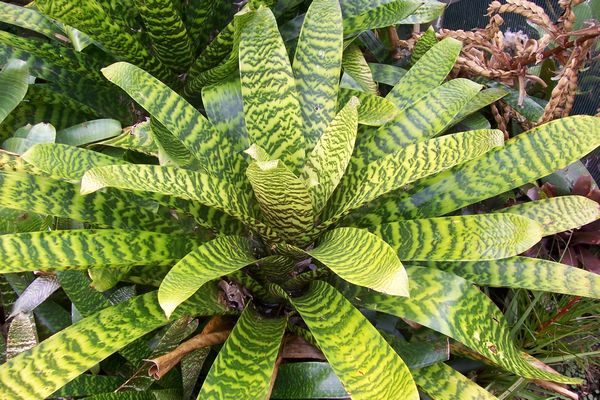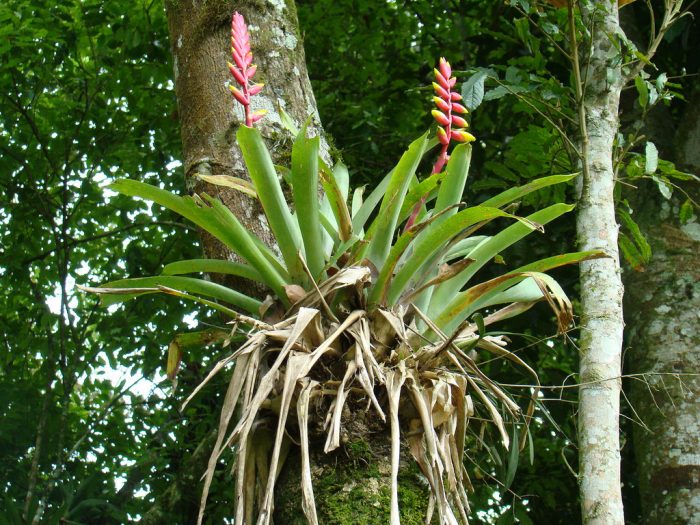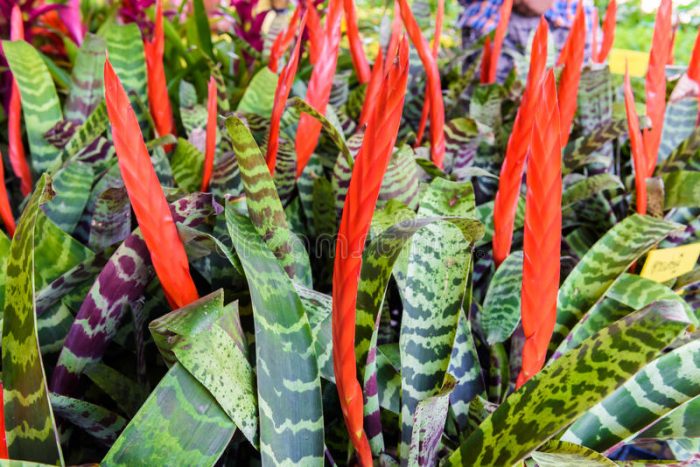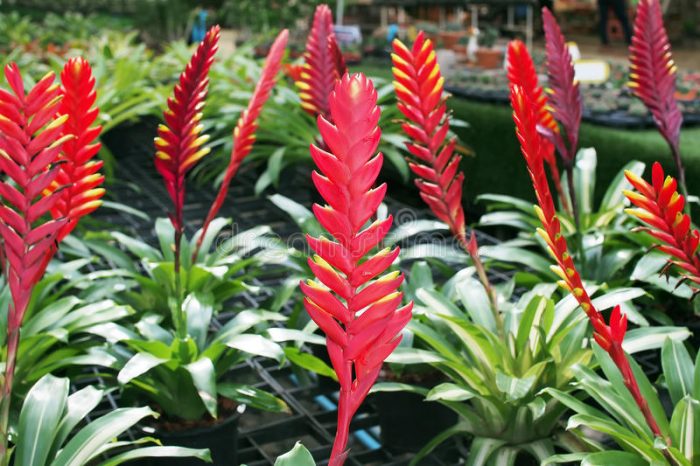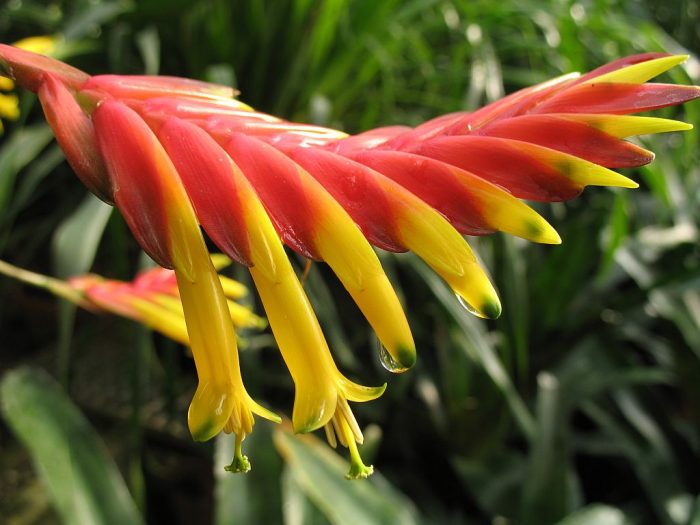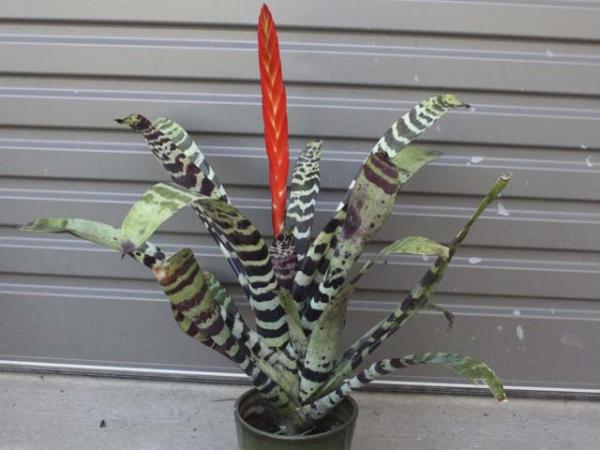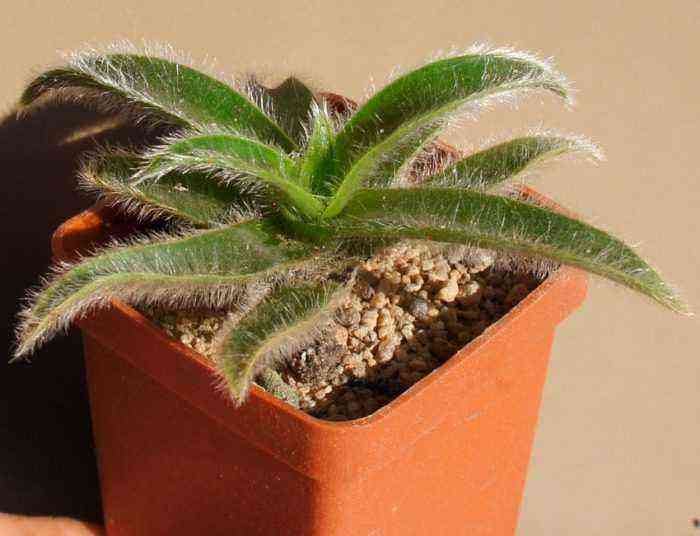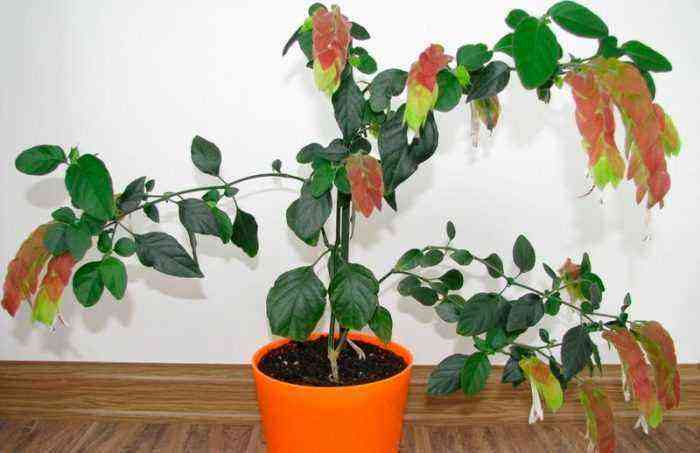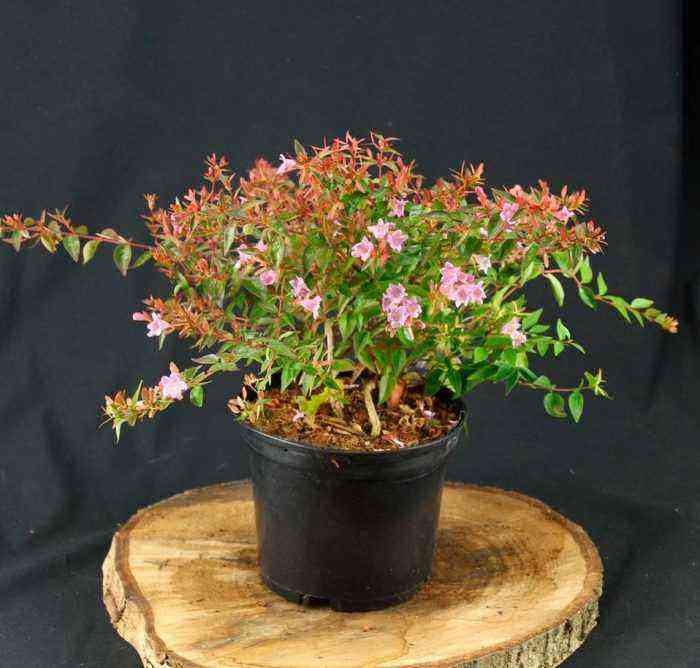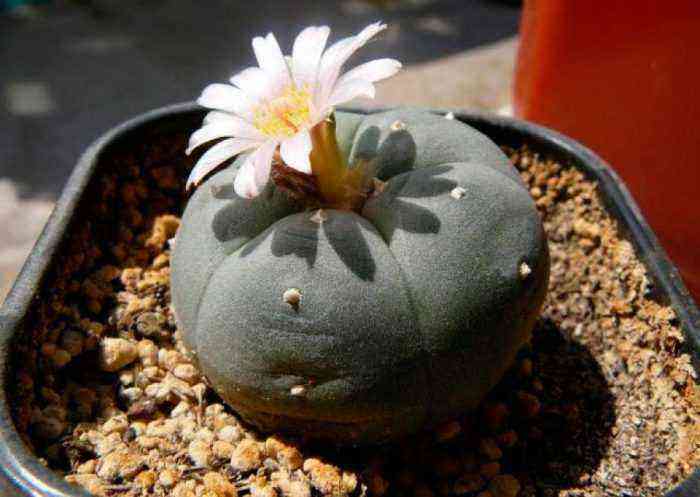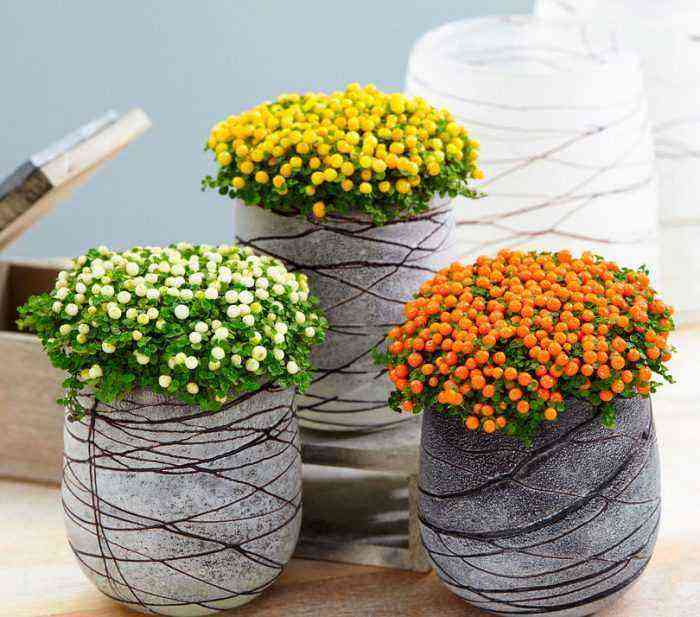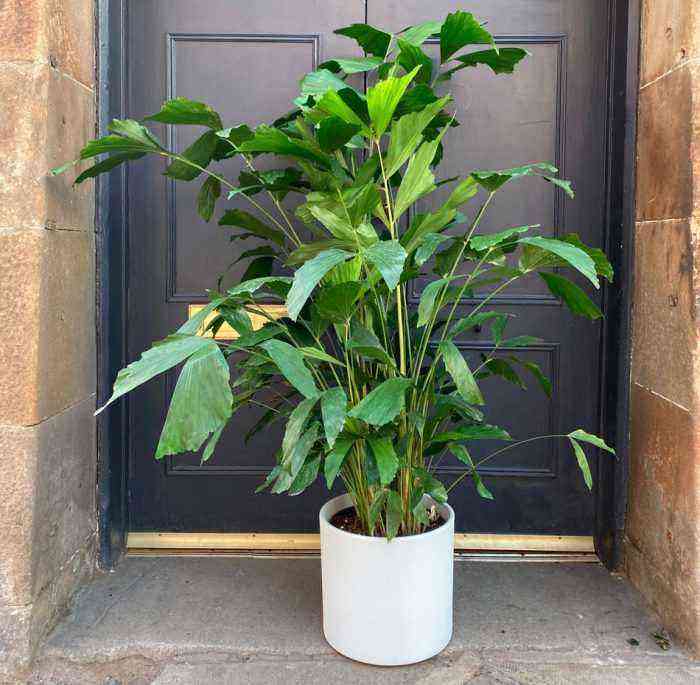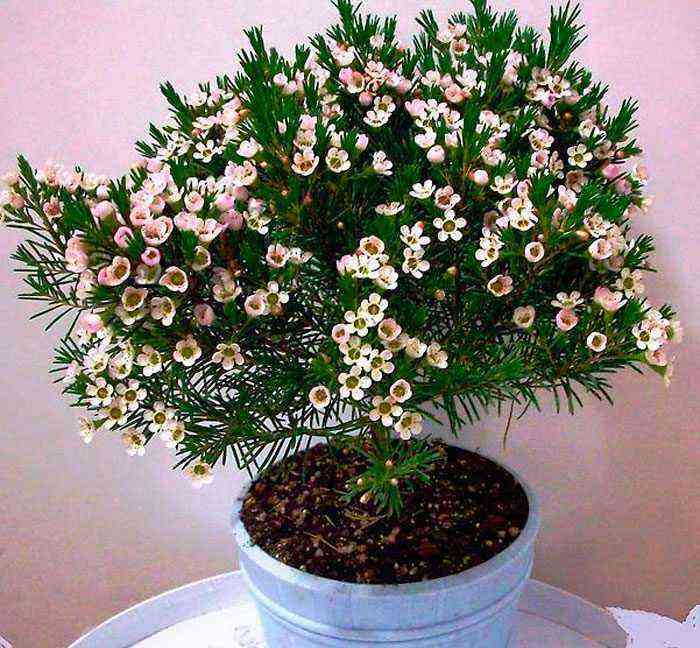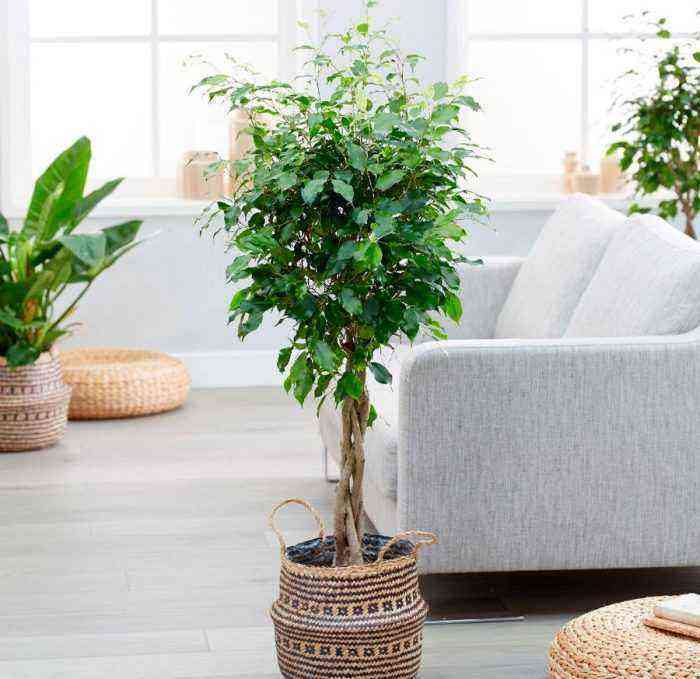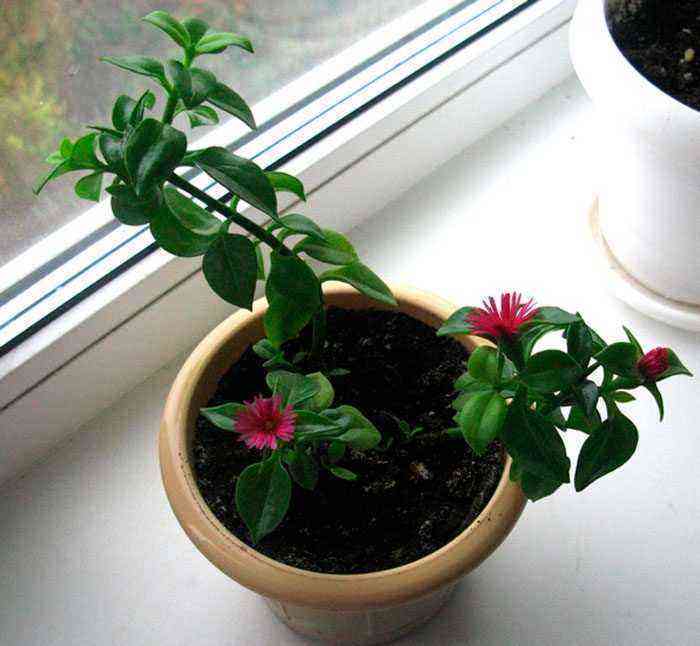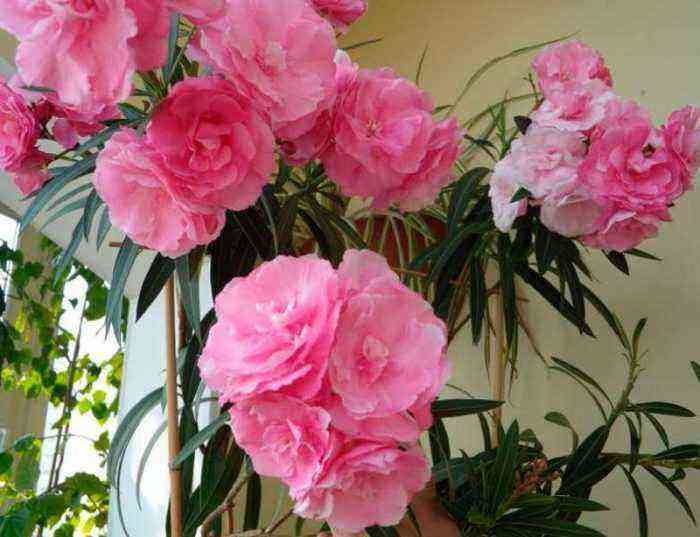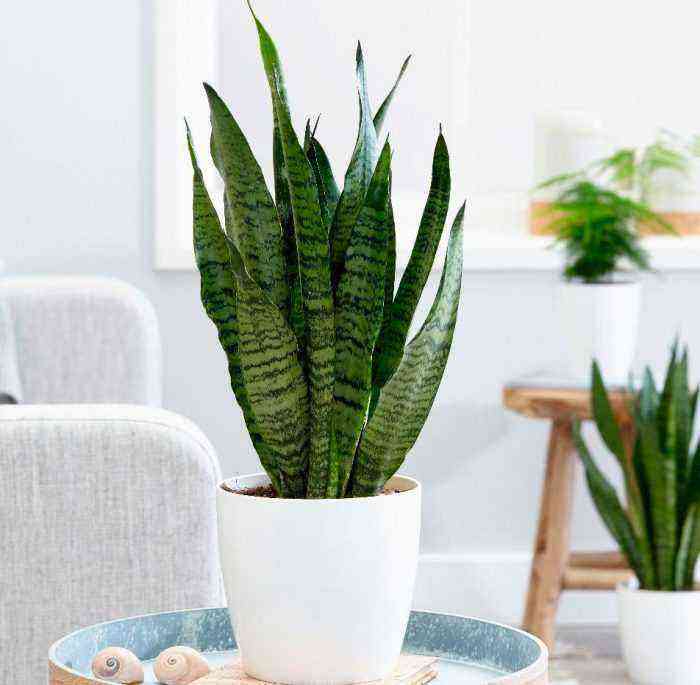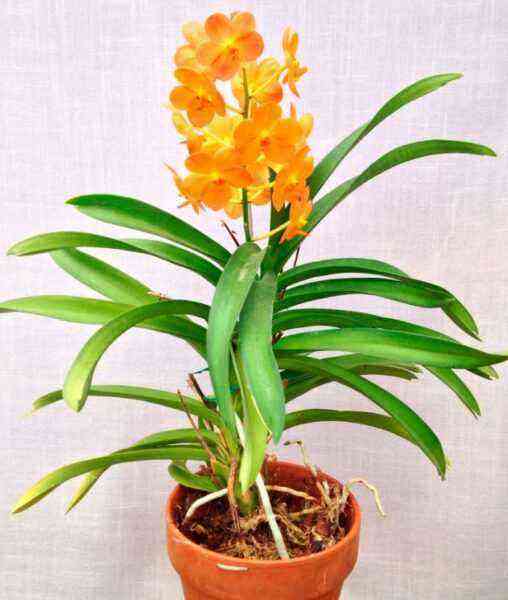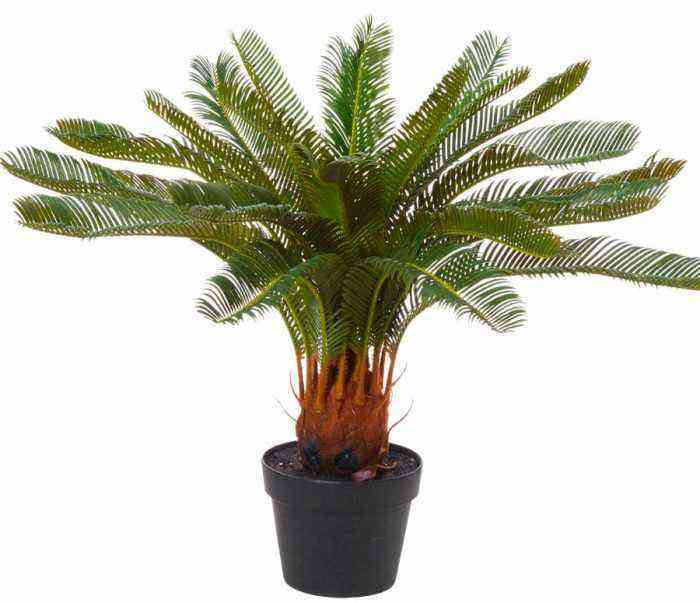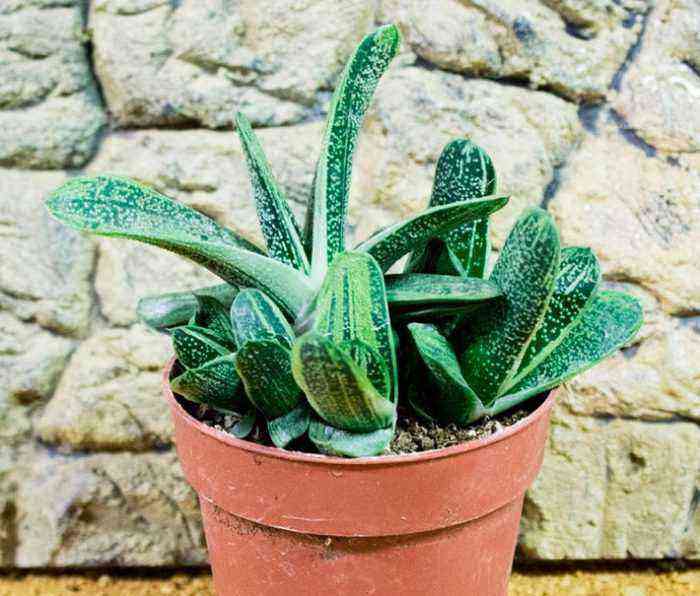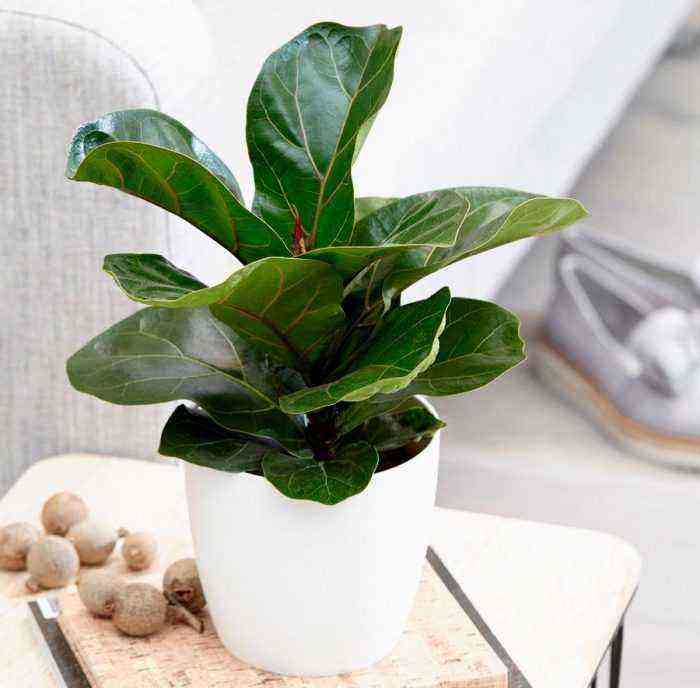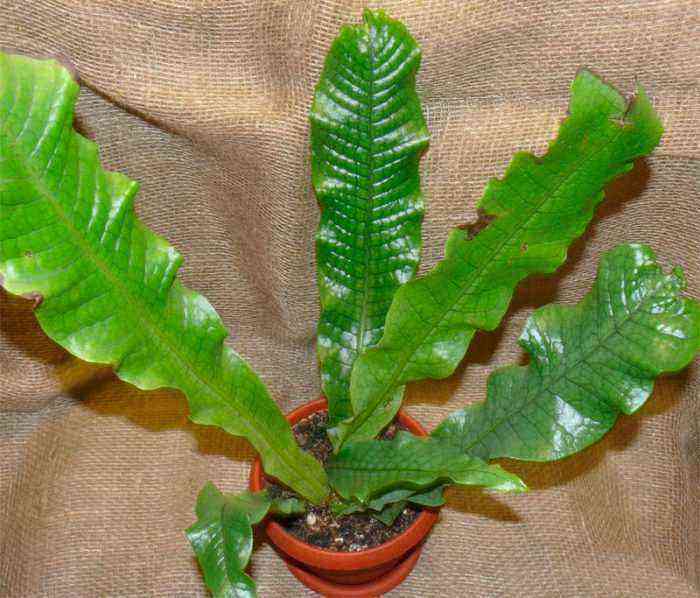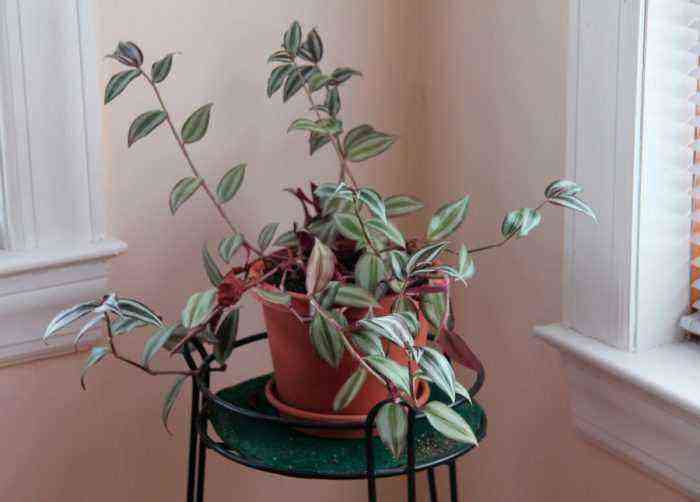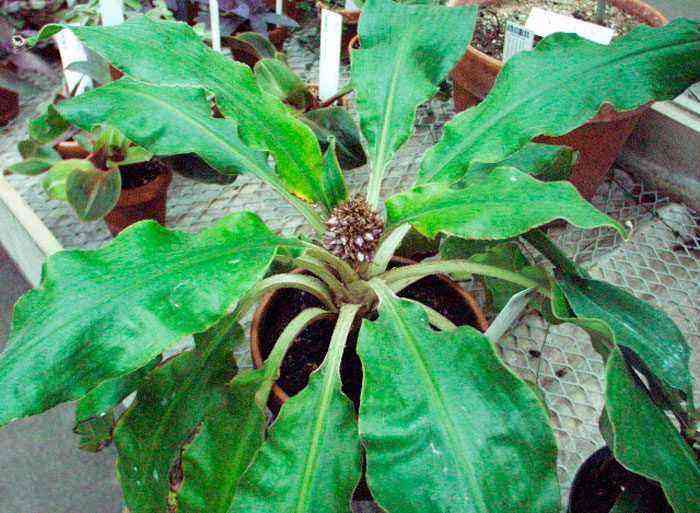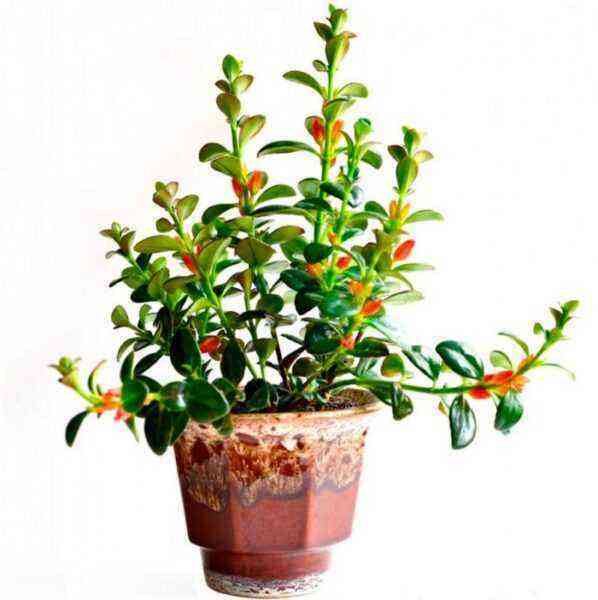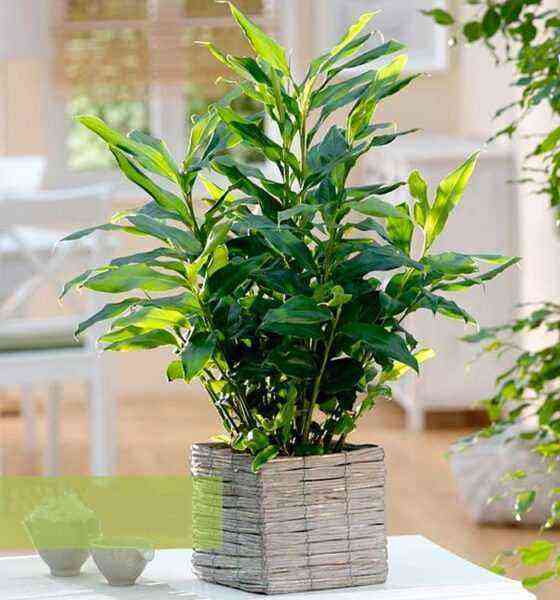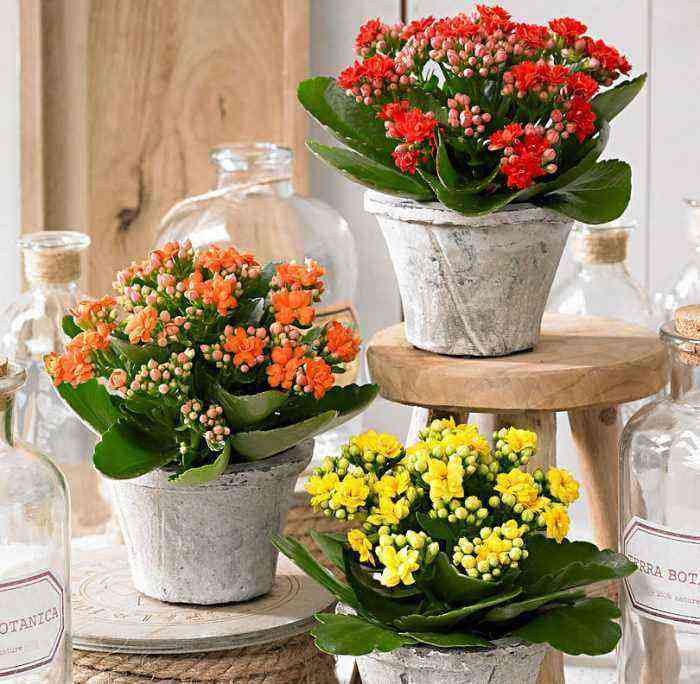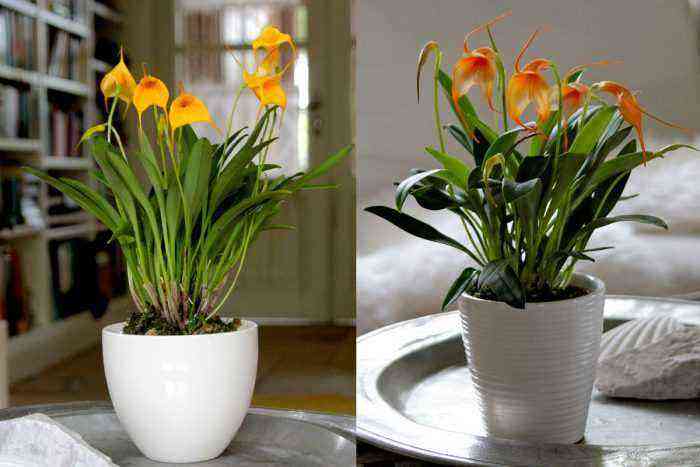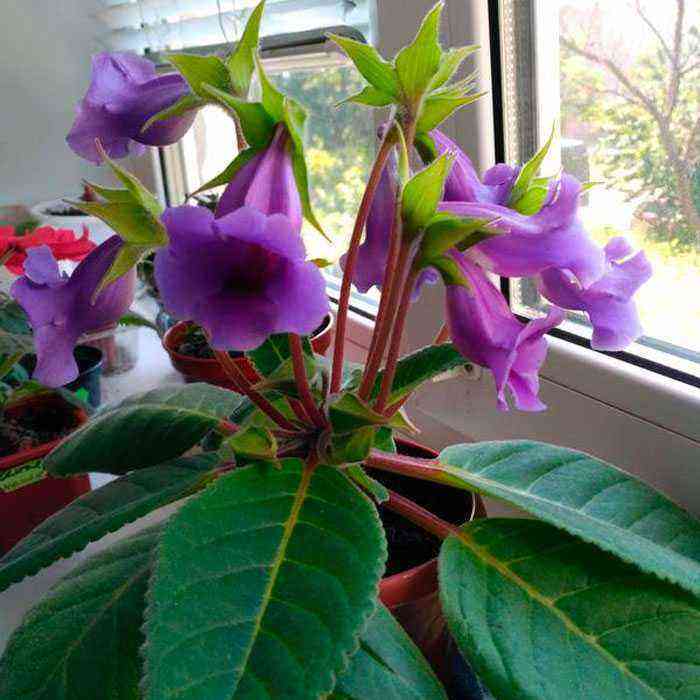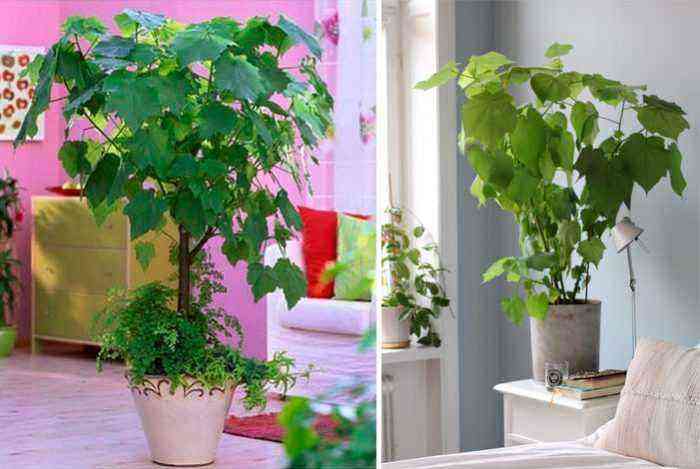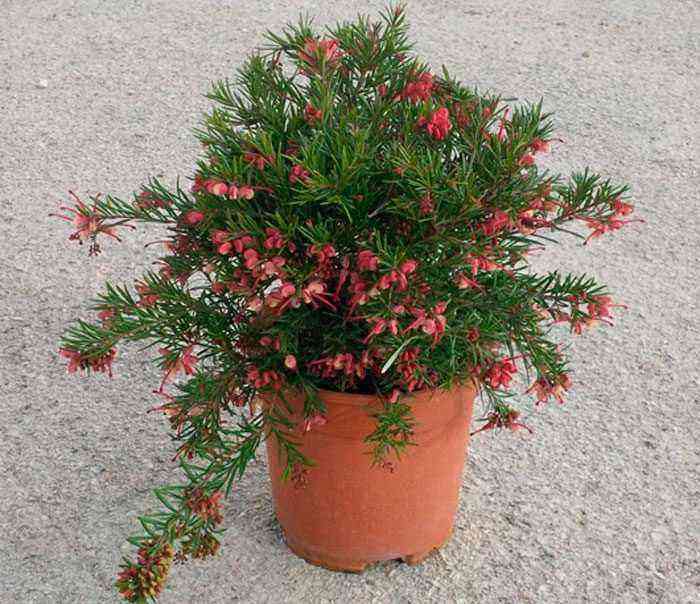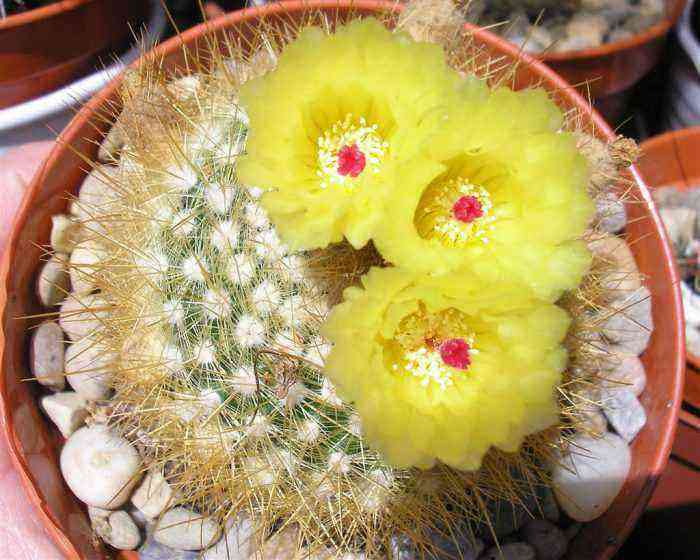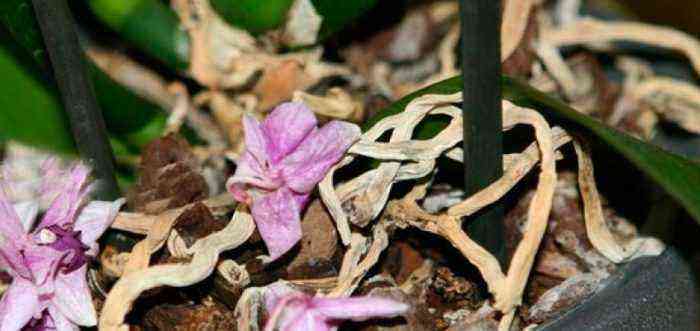Vriezia is an amazing indoor flower of unusual beauty. It is a very bright and attractive plant. Its distinctive feature is a colorful “feather”, a bright peduncle with multi-colored bracts – yellow, orange or scarlet. Decorative dark green leaves look no less beautiful. Vriezia is a capricious plant. In order for it to please with its bright flowering, it is necessary to adhere to certain recommendations for caring for the plant.
Caring for vriezia at home
Flowering
During flowering, tiny white or yellow flowers appear on the bracts of the vriezia. They fade quickly. Orange and bright red bracts do not fade for several months. Dried bracts are cut off. After flowering, an exotic flower has babies.
The flowering period of Vriezia in most cases falls on the summer. You should also take into account the planting time of the houseplant. If Vriezia does not bloom, do not despair. Flowering can be stimulated. This is not difficult. The plant blooms when ethylene gas is released. It is necessary to put several apples and bananas near the tropical beauty, covering them with a plastic bag or a cap so that the gas does not escape. But if you take care of the plant properly, you won’t have to do anything.
Most often, Vriezia does not bloom if it is in a cool place. When keeping a houseplant in the cold, flowering will be delayed or absent altogether. But at the same time, children will develop well, thanks to which the exotic beauty can be propagated.
Temperature
Vriezia is a thermophilic plant. A warm room with a constant air temperature suits her best. The plant will feel most comfortable in spring and summer at a temperature of 22-26 ° С. In autumn and winter, the tropical beauty is suitable for a temperature of 18-20 ° C. Summer heat has a detrimental effect on Vriezia. At high air temperatures, the plant may die.
Lighting
Vriezia needs a lot of light throughout the year. In winter, it is better to put the plant on the south window. When summer comes, it is better to rearrange it to the east (in extreme cases, west) window. Vriezia should be protected from direct sunlight. Otherwise, the leaves will lose their decorative effect, the pattern may disappear.
Vriezia is a shade-tolerant plant. If it is located on the south side, it is better to place it in the back of the apartment to provide the flower with diffused light.
Watering, air humidity
Vriezia should not only be watered regularly, but also maintain a constant water level in the outlet. In the summer, the soil in the pot should be constantly moist. In this case, do not forget to fill the outlet with water. If the inflorescence is just starting to grow, there should be no water in the outlet so that it does not rot. A tropical flower is watered 3-4 times a week in summer. Every three days, you need to change the water in the outlet, removing the old one with a napkin. In winter, watering should be reduced. The plant can be watered only when the top layer of the earth dries up, about 1-2 times a week. When the room temperature is low, the socket must be dry. If the room is warm, you can leave the water in the outlet for several hours a day.
Water for irrigation should be soft, room temperature. Rain or settled water is suitable for Vriezia. There should be no lime impurities in it, so that limescale does not remain on the leaves. If water remains in the pan after watering, it must be discarded.
Constant humidity is very important for vriezia. To maintain the necessary moisture, the pot is covered with pieces of moss or pebbles or wet expanded clay are poured into the pallet. It is equally important to regularly spray the tropical flower with warm water. When spraying, moisture should not get on the bracts. In winter, keep the plant pot away from hot radiators. It is necessary to use artificial humidification indoors.
Additional fertilizing
Vriezia is not a plant that needs constant fertilization. Before it starts to bloom, it is advisable to feed it with orchid fertilizer. Fertilization cannot be applied to the soil, since the roots do not take an active part in the nutrition of the plant. The flower is fed in a leaf or rosette way. After diluting the fertilizer in water, vriezia is sprayed or poured into a socket.
Transfer
After purchase, the flowering plant is not transplanted. Young specimens must be replanted every 2 years before flowering. An adult plant is transplanted every 3-5 years, after it has faded. The soil for Vriezia must be loose, breathable. The optimal composition of the soil substrate is one part of peat, sand and sod land and two parts of leaf land. Chopped sphagnum moss will help improve the quality of the potting mix. Wide, shallow pots are suitable for Vriezias. A third of the pot should be filled with expanded clay or brick chips to ensure good drainage for the plant.
Reproduction
There are two ways of reproduction of vriezia – seed and with the help of children. The seed method is very troublesome, requires special efforts, and does not always justify the result. Growing a plant in indoor conditions, it is quite difficult to obtain seeds. There is no guarantee that you will get good planting material when you buy it at a flower shop. When propagated by seeds, the plant will begin to bloom in 5-10 years.
A more acceptable way of breeding Vriezia is by children or offshoots. It is also suitable for novice flower growers. As a rule, shoots appear after the flowering of the plant. Young children lack their own root system. In order for them to fully grow and develop, you should not immediately separate them. If you hold them for 1-2 years, they will take root better. The optimal size of the separated babies is at least a third of the height of the mother plant. These kids already have their own roots. For transplanting children, it is necessary to prepare a special earthen mixture, consisting of three parts of leafy earth, one part of pine bark and sand. Young plants need to maintain a constant temperature (23-24 ° C) and high humidity. Such rooting conditions can be created by placing the young Vriese in a greenhouse. You can also cover the plant with a plastic bag. In such conditions, it must be kept for 3-4 weeks. With this method of reproduction, the tropical beauty will bloom in 5 years.
Pests and diseases
The main enemy of Vriezia is the bromeliad scale insect. You can get rid of a harmful insect by removing it with a soft cloth from the inside of the leaves. To do this, you need to prepare a soapy solution.
In some cases, the leaves are affected by fungus and turn black. To avoid a problem, the plant is moved to a well-ventilated room. Brown spots on a tropical flower indicate sunburn. In this case, it is necessary to move the pot away from the window. Dry, dark tips appear with dry indoor air. And if the plant has pale leaves and inflorescences, it does not have enough light.
Types of vriezia with photo
Vriesea perforatum (Vriesea fenestralis)
Rosette leaves up to 40 cm long and 6-6.5 cm wide, light green, with a large number of dark green veins, transverse and longitudinal stripes, smooth above, finely scaly below, brown-red at the apex. Inflorescence up to 50 cm high and 9 cm wide. The flowers are light yellow; bracts with green and dark brown spots.
Brazil. Decorative look. Cultivated in warm greenhouses.
Chess Vriesea (Vriesea gigantea)
Leaves in a rosette (towering goblet above the soil surface), short-serrated, strong, dark green, with light yellow spots on top, reddish-lilac below. Inflorescence – weakly branched panicle, up to 2 m long (panicle 1-1.2 m long.). Petals are wide, bell-shaped, yellow. Grows in tropical rainforests in Brazil. Ornamental type. Cultivated in warm greenhouses.
Large Vriesea (Vriesea imperialis)
Rosette leaves, large, up to 1.5 m long, wide, 10-12 cm wide, green, curled at the apex. The peduncle is very strong, densely covered with leaves. Inflorescence – branched panicle; all branches in dense flowers (35-40 in number). The flowers are large, 15-17 cm long, yellowish-white; bracts are red or green. Found in tropical rainforests in Brazil.
Vriesea hieroglyphica
South America. Perennial up to 1m tall. Short, hollow stem. Shiny, bright green leaves up to 75cm long and up to 8cm wide, with black strokes and collected in a basal rosette. Yellow, tubular flowers.
Vriesea psittacina
Leaves are oblong linear, shortly pointed, widened at the base, whole-edged green. The peduncle is bright red. Flowers in the inflorescence are not densely located; calyx yellow, corolla green, narrow petals; bracts as long as the calyx, red below, orange-yellow above. It lives in tropical rainforests in Brazil.
Vriesea regina
Plants are large. The rosette leaves are long and wide, 1-1.2 m long and 15-18 cm wide, grayish-green, glossy, with a slightly curled apex. Peduncle 1.7-2 m tall. Inflorescence is a branched panicle (drooping branches). Flowers are initially white, later yellowing, with a pleasant aroma; bracts boat-like widened, pink.
It grows in tropical rainforests in Brazil.
Vriesea saundersii
South America. Perennial up to 40cm tall. Short, hollow stem. Leathery, shiny, greyish-green, hard leaves, with a purpleish underside and collected in a basal rosette. Yellow, tubular flowers surrounded by bright yellow bracts.
Vriesea splendens major
Leaves in a large rosette, 60-80 cm in diameter, wide, 8-10 cm wide, light green, with brownish-red stripes. The inflorescence is large, 70-80 cm tall; bracts are light red.
Vriesea splendens var.splendens
Terrestrial or epiphytic plants. Leaves broadly lanceolate, dark green, with transverse dark purple stripes and spots, with tops bent downwards. The inflorescence is an xiphoidly flattened ear. The flowers are arranged in two rows, yellow; bracts are scarlet-red, glossy. Grows in tropical rainforests in Guiana.
Vriesea carinata Wawra
Grows in the forests of Eastern Brazil. Epiphytic or terrestrial plant. Leaves about 20 cm long and 2 cm wide form a funnel-shaped rosette, covered with barely visible scales on both sides, broadly linear, soft, pale green, without a pattern. Peduncle up to 5 cm high, straight or drooping, very thin; short and wide, with a triangular notch at the apex, few-flowered with a geniculate axis. The inflorescences are erect, tightly covering the axis, narrow, thin with a sharp keel, pinkish with a yellow or yellowish-green top and edge. The flowers are compressed, on short stalks, yellow, green at the top, up to 30 cm long. Blooms in June-July, again in November-December.
Many hybrids are known. Most of them are characterized by long flowering.
Vriesia splendens
An epiphytic or terrestrial plant with a few tongue-shaped (belt-like, wide, with curved edges, pointed or rounded at the apex; slightly covered with scales on both sides;) leaves 20-40 cm long, green, decorated with transverse (horizontal) purple stripes. The stem of Vriezia is shortened, from 30 to 60 cm high, the leaves form a dense wide funnel-shaped rosette. Flowers 2.5-5 cm, yellow, collected in simple spike-shaped, multicolored inflorescences, appear at any time of the year on a flat, xiphoid red bracts. Most vriezia species have long flowering periods (up to several months).

